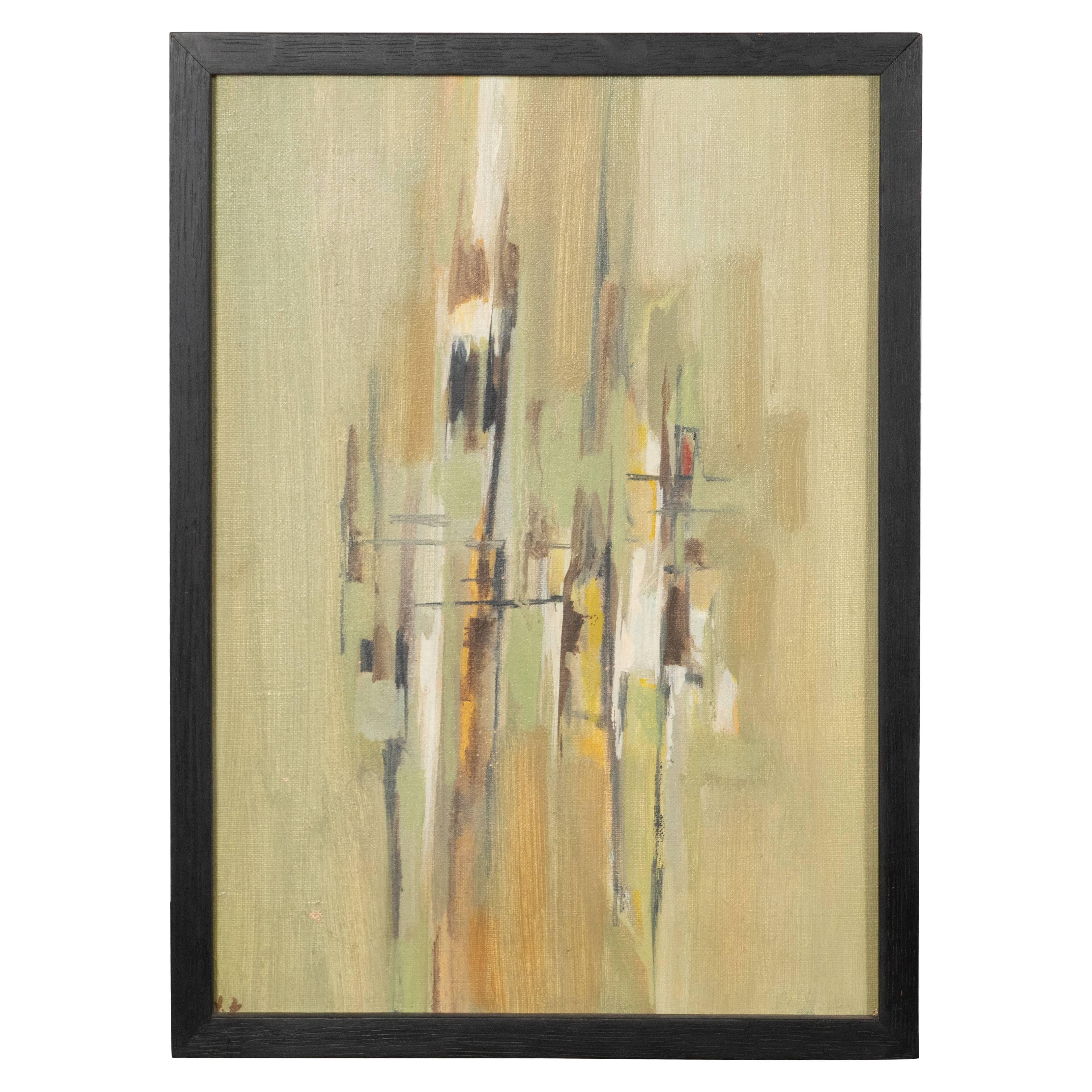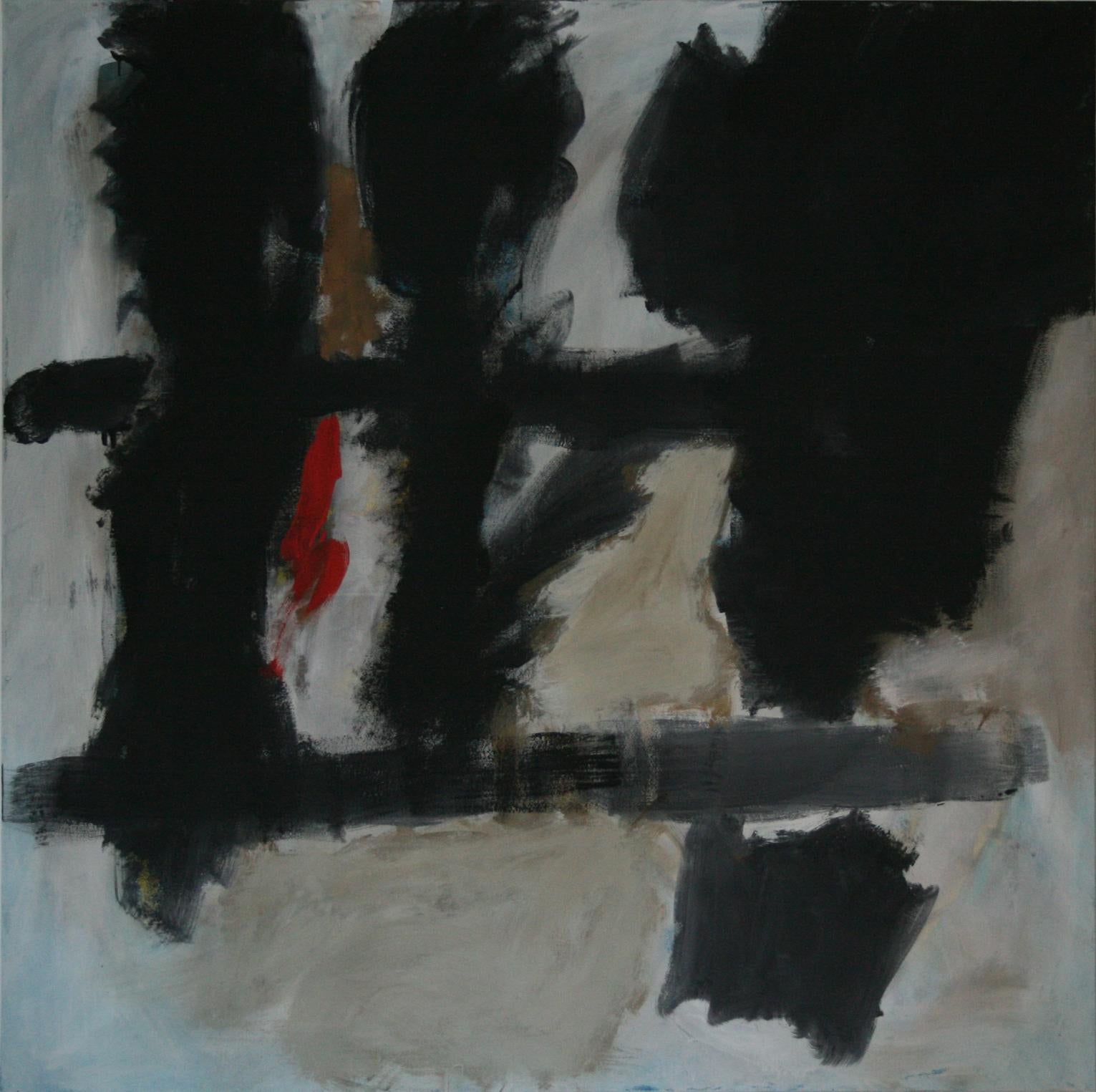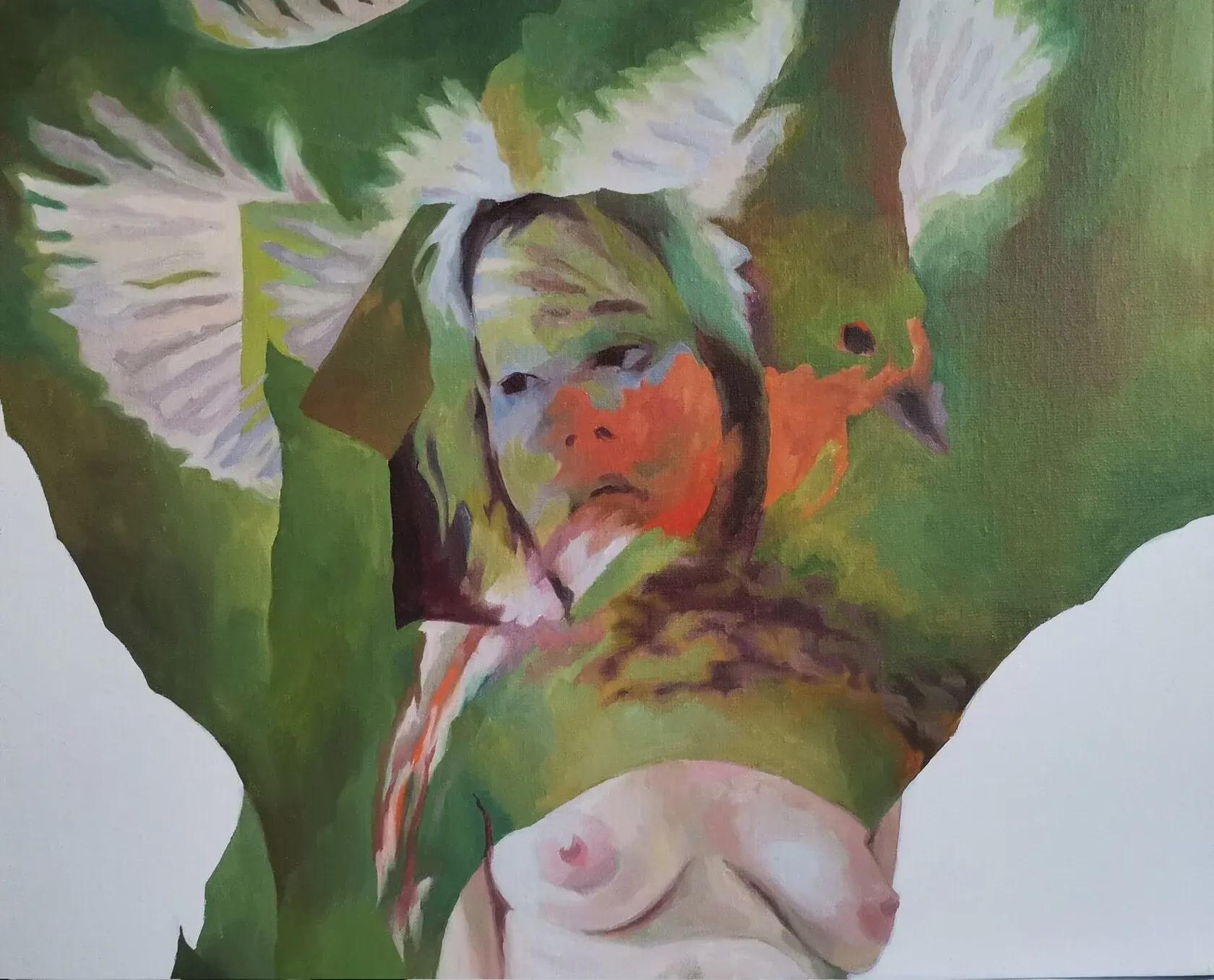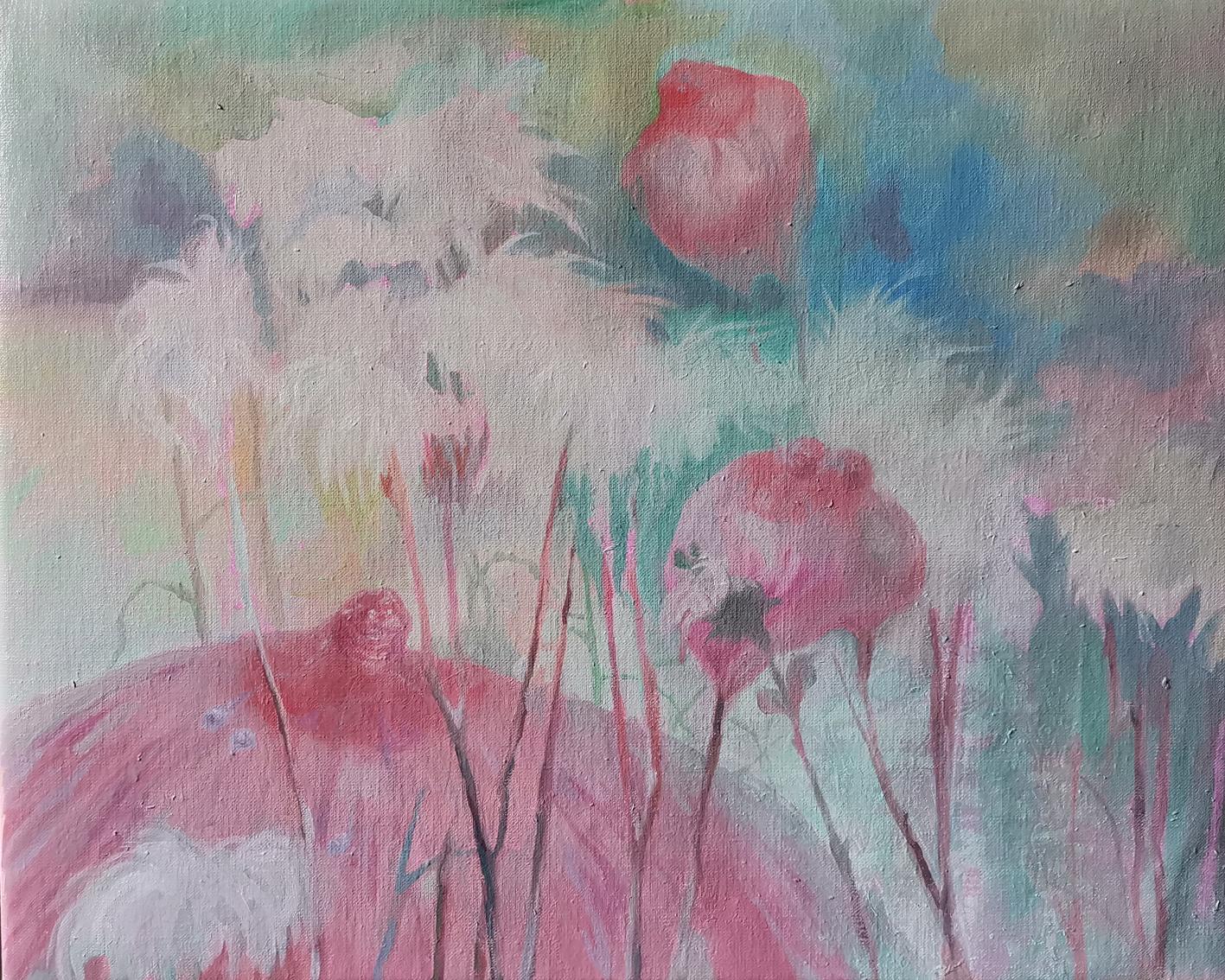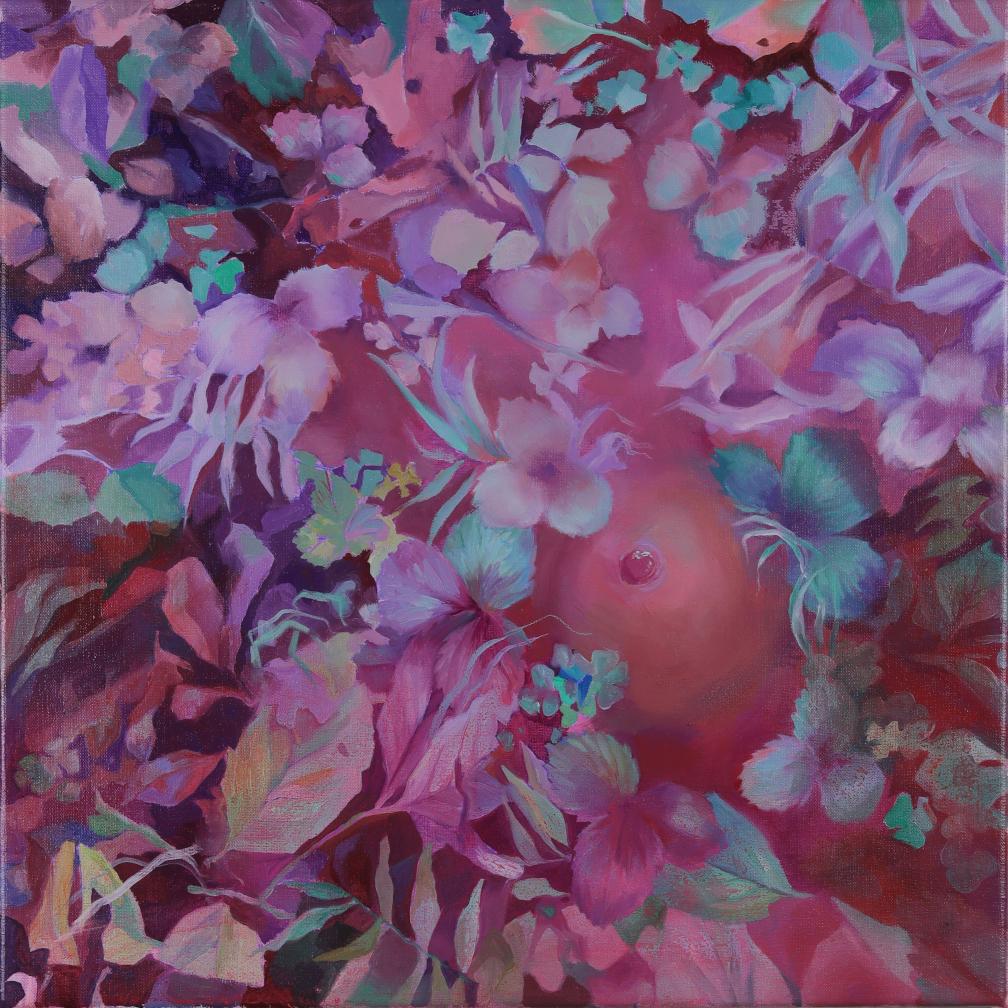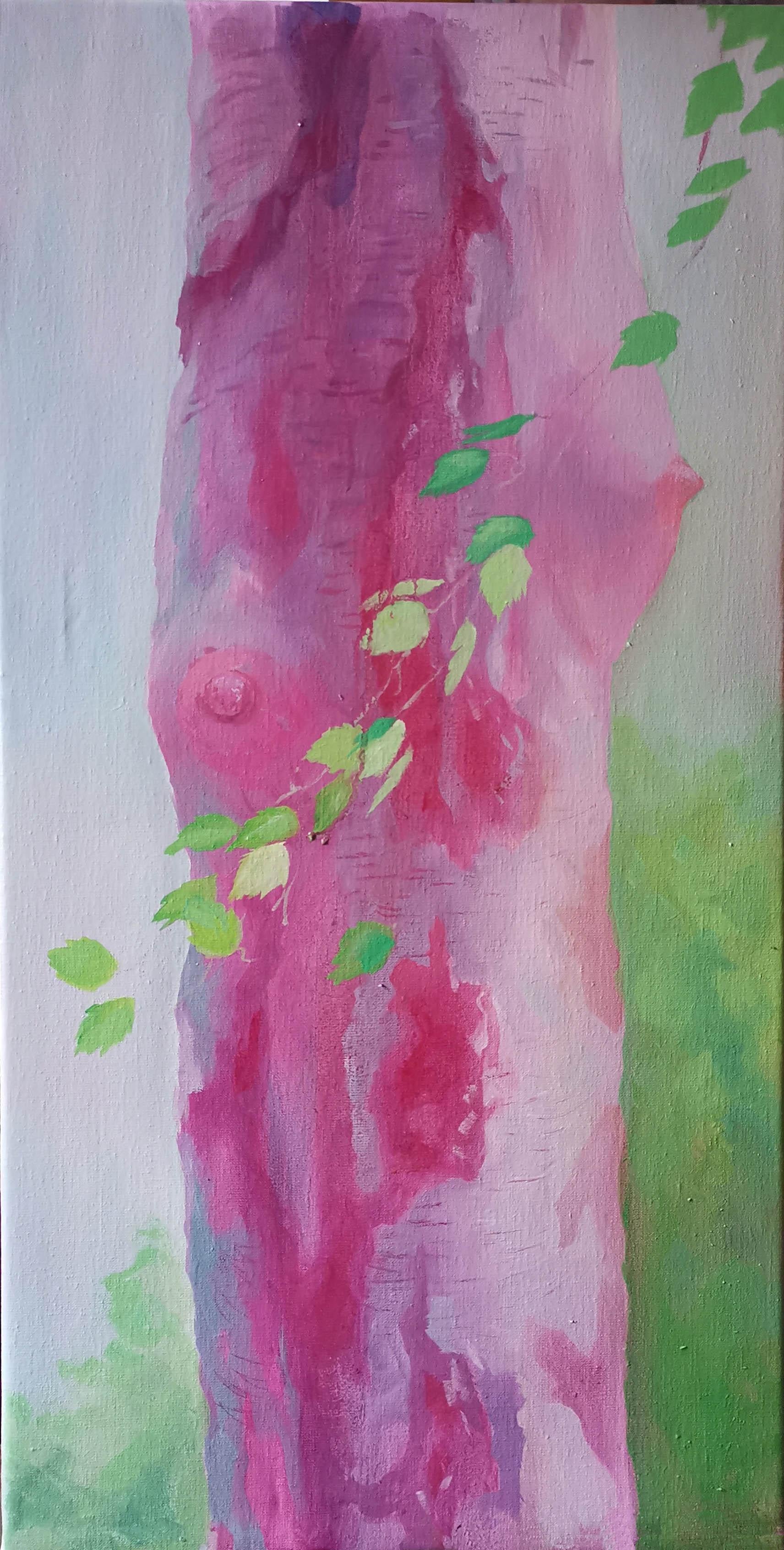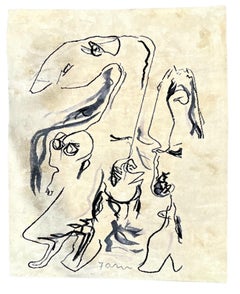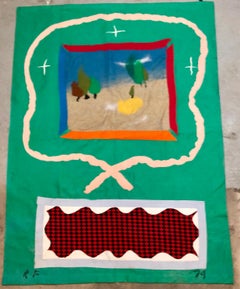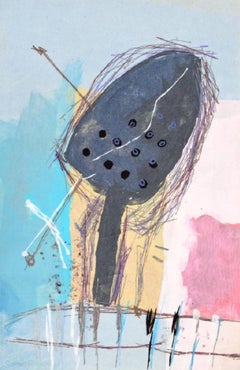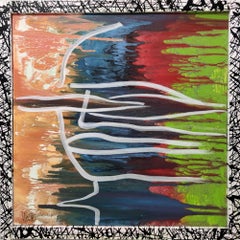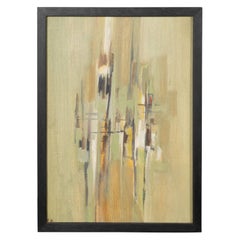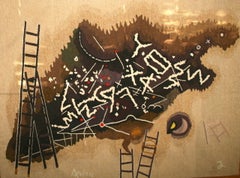
Celebrate Jerusalem Hand Woven Tapestry Israeli Modernist Master Mordechai Ardon
View Similar Items
Want more images or videos?
Request additional images or videos from the seller
1 of 5
Mordecai ArdonCelebrate Jerusalem Hand Woven Tapestry Israeli Modernist Master Mordechai Ardonc.1960s
c.1960s
About the Item
- Creator:Mordecai Ardon (1896 - 1992, Israeli)
- Creation Year:c.1960s
- Dimensions:Height: 62.2 in (157.99 cm)Width: 47.24 in (119.99 cm)
- Medium:
- Movement & Style:
- Period:
- Condition:
- Gallery Location:Surfside, FL
- Reference Number:1stDibs: LU382184022
About the Seller
4.9
Platinum Seller
These expertly vetted sellers are 1stDibs' most experienced sellers and are rated highest by our customers.
Established in 1995
1stDibs seller since 2014
1,549 sales on 1stDibs
Typical response time: 1 hour
More From This SellerView All
- Huge Scandinavian Abstract Wool Tapestry Art Rug Asger Jorn Cobra Artist DenmarkBy Asger JornLocated in Surfside, FLAsger Jorn (1914-1973) Ege Axminster, Denmark. Danish Tapestry Rug Art-Line Etiquette de l'éditeur Ege Axminster (Danemark) titrée au revers. Les Emigrants 132 x 98 inches, Pure ...Category
20th Century Abstract Expressionist More Art
MaterialsWool
- 70's Large Colorful Abstract Expressionist Art Protis Tapestry Wool Wall HangingBy Robert FreimarkLocated in Surfside, FLArt Protis Wall Tapestry Robert Freimark (1922 - 2010) Bob Freimark was active/lived in Ohio, California, Michigan. Robert Freimark is known for abstract expressionist painting, ...Category
1970s Abstract Expressionist Mixed Media
MaterialsWool
- Modernist Israeli Soft Tapestry Wall Hanging Rug Calman ShemiBy Calman ShemiLocated in Surfside, FLthis is a bright vibrant abstract wall hanging tapestry by Calman Shemi. I believe the material is wool with a linen backing but i am not positive. it can also be used as a floor rug...Category
1980s Abstract Expressionist Mixed Media
MaterialsWool, Mixed Media
- Australian Abstract Expressionist Gouache Painting Charcoal on Shaped PaperBy David RankinLocated in Surfside, FLDavid Rankin American (b. 1946) Untitled (Black on gray) (1990) Gouache and charcoal on paper signed lower left 19 x 15 inches Rankin is a New York-based, British-born Australian post-war and contemporary artist known for his expressionistic abstract paintings. His work can be categorized by his use of quick, loose brushstrokes, reminiscent of scribbles on a page. Rankin works predominantly in oil painting and acrylic on canvas, but also works with paper, prints, sculptures and ceramics. Rankin has held over 100 one-person exhibitions in cities across the world, including New York, London, Paris, Beijing, Mexico, Vienna, Berlin and Cologne, as well as all over Australia. Represented in many of the world’s leading public and private collections and museums, David Rankin’s work is featured in Australia’s leading institutions, including the National Gallery of Australia, Art Gallery of New South Wales, National Gallery of Victoria and Queensland Art Gallery. David Rankin was born in Plymouth, Devon, England in 1946 then emigrated to Australia with his family in 1948. He spent his childhood in the 1950s in the semi-rural Port Hacking region South of Sydney and his teenage years in country New South Wales, from Hay, Wagga Wagga and Albury in the South to Bourke and Brewarrina in the North. Rankin is self-taught, developing his techniques and ideas in the outback towns of his youth. He was inspired by the greats from Leonardo da Vinci to Paul Klee as well as being influenced by the history of Buddhism and Asian art. In his travels before he arrived in Sydney in 1967 he developed a concept of what he wanted to achieve as an Australian artist. His dream was to express the anima, the life spirit or the essence of God in all nature. As an Australian artist he believed could bring the elements of Western Art together with an understanding and love for the cultures of Asia and the Australian Aborigine. He also felt that as Australia was closer to Asia than Europe it made sense to think about the art of Indian, Chinese and Japanese artists, and that one could not be an authentic articulate Australian artist without a love and respect for the artistic and spiritual expressions of the various Aboriginal artists, peoples and cultures. His work combined elements of Abstract Expressionist painting with Jewish and Aboriginal influences. In 1979 his first wife, Jennifer Mary Roberts (née Haynes) died. Rankin subsequently met his current wife Lily Brett, whose own life was etched by tragedy with her parents being survivors of the Holocaust. She too migrated to Australia as a child after the Second World War in 1948. The artist recounts that his empathy for Lily and the pity for his first wife's death fused into what he calls "the dark blessing of my life." The darkness was transformed into images. The author Dore Ashton writes that the events of 1979 and the fire which ravished his studio in 1997 and burnt his art works and many personal possessions, had a profound impact on his work. Having personal life experiences as his subject matter, Rankin's paintings contemplate these things. For example, his Jerusalem series followed a trip to Jerusalem in 1988, which then led to his Golgotha works. His travels to the Australian, American and Mexican deserts became the subject matter for many of his canvases, such as Ridge – Mungo, Golden Prophecy – San Antonio, Grey Sonora Landscape and then led to his Witness Series. From the fire in his studio he then painted Buddha and Flames. He illustrated two books by Lily Brett on the holocaust and explored the theme further in his huge work The Drowned and The Saved from a book by Primo Levi of the same name. Through Brett he encountered Jewish mythology and painted judaica imagery, Black Menorah...Category
1990s Abstract Expressionist Abstract Paintings
MaterialsCanvas, Oil
- Australian Abstract Expressionist Oil PaintingBy David RankinLocated in Surfside, FLDavid Rankin is a New York-based, British-born Australian post-war and contemporary artist known for his expressionistic abstract paintings. His work can be categorized by his use of quick, loose brushstrokes, reminiscent of scribbles on a page. Rankin works predominantly in oil painting and acrylic on canvas, but also works with paper, prints, sculptures and ceramics. Rankin has held over 100 one-person exhibitions in cities across the world, including New York, London, Paris, Beijing, Mexico, Vienna, Berlin and Cologne, as well as all over Australia. Represented in many of the world’s leading public and private collections and museums, David Rankin’s work is featured in Australia’s leading institutions, including the National Gallery of Australia, Art Gallery of New South Wales, National Gallery of Victoria and Queensland Art Gallery. David Rankin was born in Plymouth, Devon, England in 1946 then emigrated to Australia with his family in 1948. He spent his childhood in the 1950s in the semi-rural Port Hacking region South of Sydney and his teenage years in country New South Wales, from Hay, Wagga Wagga and Albury in the South to Bourke and Brewarrina in the North. Rankin is self-taught, developing his techniques and ideas in the outback towns of his youth. He was inspired by the greats from Leonardo da Vinci to Paul Klee as well as being influenced by the history of Buddhism and Asian art. In his travels before he arrived in Sydney in 1967 he developed a concept of what he wanted to achieve as an Australian artist. His dream was to express the anima, the life spirit or the essence of God in all nature. As an Australian artist he believed could bring the elements of Western Art together with an understanding and love for the cultures of Asia and the Australian Aborigine. He also felt that as Australia was closer to Asia than Europe it made sense to think about the art of Indian, Chinese and Japanese artists, and that one could not be an authentic articulate Australian artist without a love and respect for the artistic and spiritual expressions of the various Aboriginal artists, peoples and cultures. His work combined elements of Abstract Expressionist painting with Jewish and Aboriginal influences. In 1979 his first wife, Jennifer Mary Roberts (née Haynes) died. Rankin subsequently met his current wife Lily Brett, whose own life was etched by tragedy with her parents being survivors of the Holocaust. She too migrated to Australia as a child after the Second World War in 1948. The artist recounts that his empathy for Lily and the pity for his first wife's death fused into what he calls "the dark blessing of my life." The darkness was transformed into images. The author Dore Ashton writes that the events of 1979 and the fire which ravished his studio in 1997 and burnt his art works and many personal possessions, had a profound impact on his work. Having personal life experiences as his subject matter, Rankin's paintings contemplate these things. For example, his Jerusalem series followed a trip to Jerusalem in 1988, which then led to his Golgotha works. His travels to the Australian, American and Mexican deserts became the subject matter for many of his canvases, such as Ridge – Mungo, Golden Prophecy – San Antonio, Grey Sonora Landscape and then led to his Witness Series. From the fire in his studio he then painted Buddha and Flames. He illustrated two books by Lily Brett on the holocaust and explored the theme further in his huge work The Drowned and The Saved from a book by Primo Levi of the same name. Through Brett he encountered Jewish mythology and painted judaica imagery, Black Menorah...Category
1990s Abstract Expressionist Abstract Paintings
MaterialsCanvas, Oil
- Abstract Expressionist Art Latin American Mixed Media Oil Painting Perez CelisBy Perez CelisLocated in Surfside, FLPerez Celis (American, Argentinian 1939-2008) Oil and mixed media on canvas 1993 Latin abstract expressionism oil painting depicting a color block and drip motif Hand signed and dated to lower left. In gilt gold frame. Approximate dimensions: canvas h. 14", w. 21"; frame h. 24", w. 31", d. 2.25". Celis Pérez (1939 – 2008) was an Argentine artist usually referred to as Pérez Celis. He earned international recognition for his paintings, sculptures, murals and engravings. Pérez was born in San Telmo on the South side of Buenos Aires, and grew up in Liniers, on the opposite end of town. Working as a newsboy during childhood, he learned the basics of drawing and painting via correspondence classes. In 1954 he entered the Manuel Belgrano National School of Fine Arts, and under the guidance of teachers like Leopoldo Presas, Santiago Cogorno, and Libero Badii, Pérez Celis developed his interest in abstraction. He first exhibited at age 17, at Galería La Fantasma. Following his entry into the professional arts world, he began using his name in a reversed form. At the start of his career he has been influenced by Hungarian artist Victor Vasarely during a 1957 retrospective of the latter's works at the National Fine Arts Museum. Some of his later works bear the influence of Gerhard Richter. He married Sarah Fernández in 1959 and relocated to Uruguay for less than a year invited by Carlos Páez Vilaró . Took part in the "Group of 8" – proponents of abstract art among the normally conservative local audiences. "Grupo de los 8", was a movement of Latin American, Uruguayan and Argentine artists formed in 1958 together with Oscar García Reino, Miguel Ángel Pareja, Raúl Pavlovsky, Lincoln Presno, Américo Sposito, Alfredo Testoni and Julio Verdie in order to promote new tendencies in painting. In 1960 they were invited by art critic Rafael Squirru to join the international exhibition at the Buenos Aires Museum of Modern Art (of which he was creator and first director) with artists such as Willem de Kooning, Roger Hilton and Lucio Fontana. He returned to Buenos Aires in 1960, and opened a downtown atelier with the support of Guido Di Tella, his first mecena. Pérez Celis explored geometric art, and builds his first mural, Fuerza América, in 1962. Indigenous patterns and colors would reappear in many of his productions during the 1960s and 1970s, and distinguished him from most other local artists, among whom pop art and figurative art was more influential. His work had a more raw, Art Brut , Brutalist feel to it. He was featured in more than 120 solo shows during his career, notably the Galerie Bellechasse, Anita Shapolsky Gallery New York, (he showed with Agustin Fernandez, Rodolfo Abularach, Giancarlo Puppo and Cuban artist Mario Bencomo) Arteconsult, Boston & Panama, Witcomb, etc. and his art was purchased for many private collections and first-rate museums, including the Museum of Modern Art in New York. He received commissions from the Argentine government, which placed his works in the Ministro Pistarini International Airport, from other governments, and from prominent individuals and businesses. In 1977, following his wife's passing in an automobile accident he remarried and lived in Caracas, Paris, New York City, and Miami in subsequent years. He shared his time between Buenos Aires and New York in 1994, a retrospective of his work was hosted at Biblioteca Nacional visited by more than 300000 persons. He continued exhibiting in Latin America, in the Sanyo Gallery in Tokyo, the Anita Shapolsky Gallery in New York City, and at numerous universities. Among his numerous recognitions in later years was the Alba Award at the 61st Salón Nacional de Artes Plásticas Argentino, and he was proclaimed a Distinguished Citizen of the City of Buenos Aires in 2001. He also created several literary illustrations, notably those for Jorge Luis Borges' Spanish-language translation of Walt Whitman's poem Leaves of Grass. A fan of the Club Atlético Boca Juniors football team, he created two murals in 1997 for the team's La Bombonera Stadium in Buenos Aires: "Idolos" (Idols) and "Mito y Destino" (Myth and Destiny), both Venetian mosaics and bronze sculpture on cement. Museum of Modern Art (MOMA), New York, NY Museum of Modern Latin American Art...Category
1990s Abstract Expressionist Abstract Paintings
MaterialsCanvas, Mixed Media, Oil
You May Also Like
- "E tra un attimo non ci sarai più" by Enzio Wenk, 2018-Acrylic, NeoExpressionismBy Enzio WenkLocated in Bresso, ITTranslated title: "And in a moment you will be gone". Acrylic paint on canvas. Width: 78 cm Depth: 5 cm Height: 78 cmCategory
2010s Abstract Expressionist Abstract Paintings
MaterialsCanvas, Acrylic
- Untitled - Abstract CompositionBy Jen BrissonLocated in New York, NYThis sophisticated abstract painting was realized by the esteemed Mid Century artist, Jen Brisson in 1961. It features an abstract grid like composition created by intersecting verti...Category
1960s Abstract Expressionist Abstract Paintings
MaterialsCanvas, Acrylic
- Nathalie Fontenoy French Artist Painting on Canvas "Bonjour Monsieur Soulages"By Nathalie FontenoyLocated in Paris, FRPainting "Bonjour Monsieur Soulages" The artist wanted to pay tribute to Pierre Soulage who will be 100 years old on December 24th, she painted the artwork after having seen the exhi...Category
21st Century and Contemporary Abstract Expressionist More Art
MaterialsCanvas, Acrylic
- Hermes, 40x50cm, oil/canvasLocated in Yerevan, AMHermes, 40x50cm, oil/canvasCategory
2010s Abstract Expressionist More Art
MaterialsCanvas, Oil
$825 Sale Price25% Off - Looking for something to wear, 80x110cm, oil/canvasLocated in Yerevan, AMLooking for something to wear, 80x110cm, oil/canvasCategory
2010s Abstract Expressionist More Art
MaterialsCanvas, Oil
$1,500 Sale Price25% Off - Apple tree, 100x100cm, oil/canvasLocated in Yerevan, AMApple tree, 100x100cm, oil/canvasCategory
2010s Abstract Expressionist More Art
MaterialsCanvas, Oil
$2,325 Sale Price25% Off


